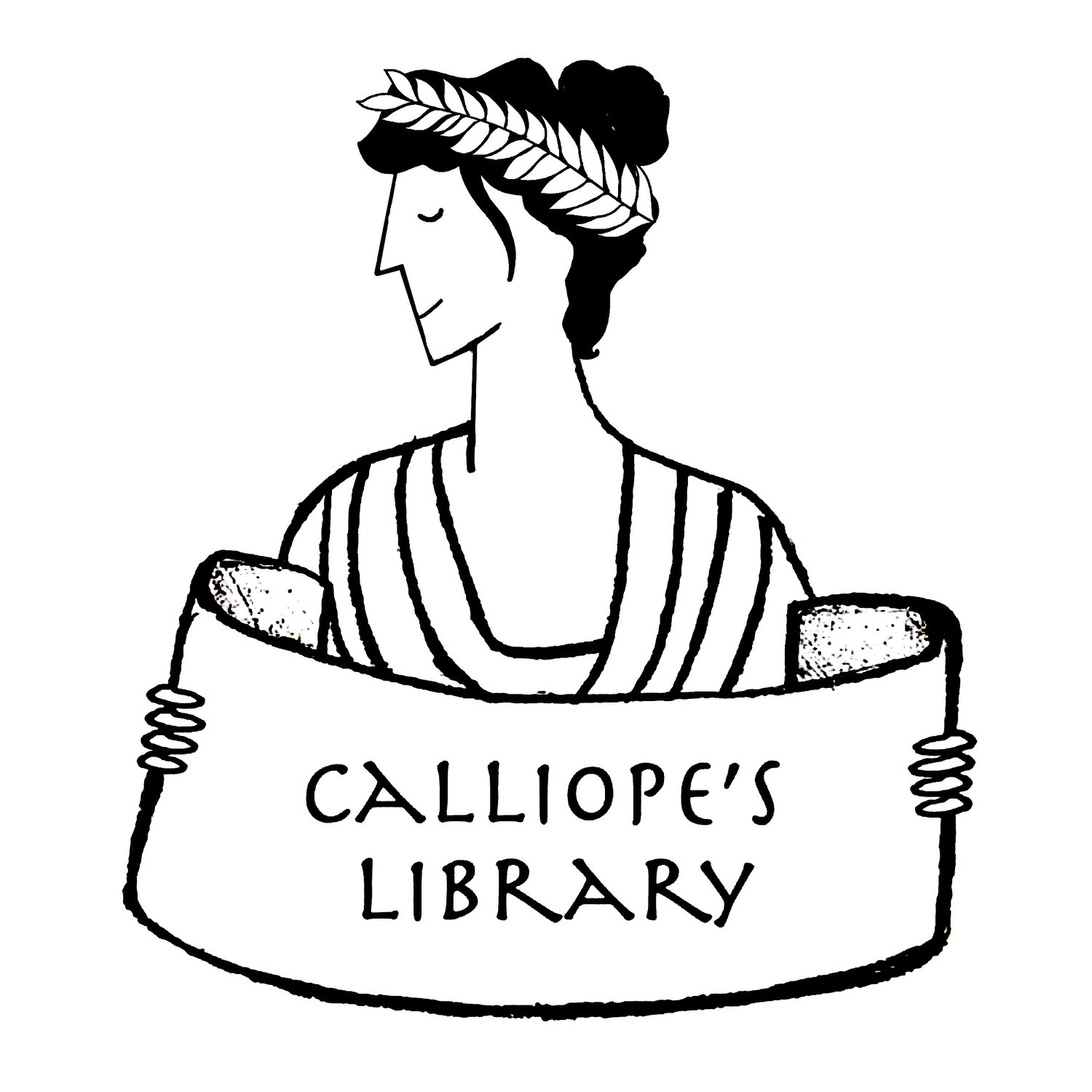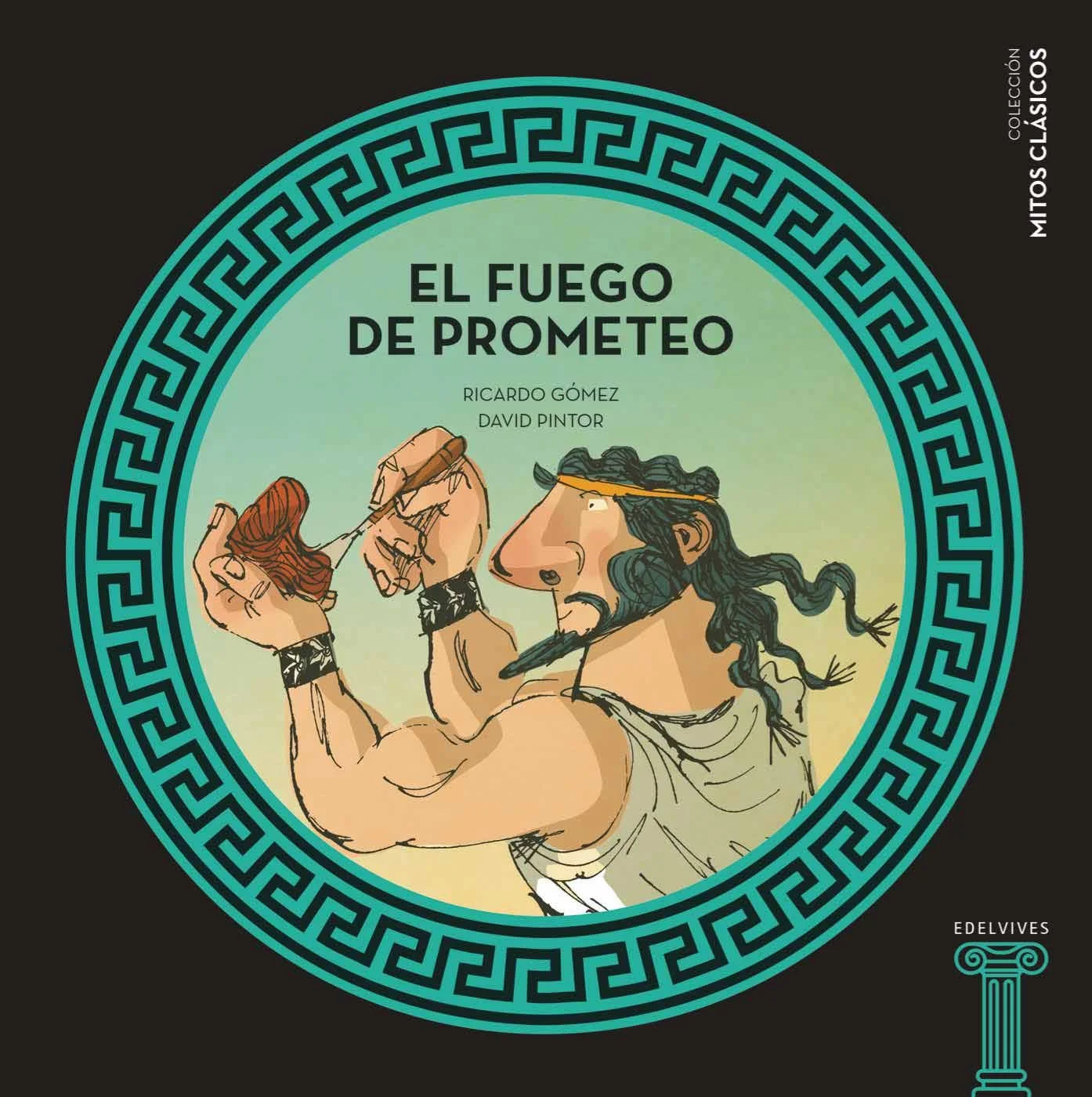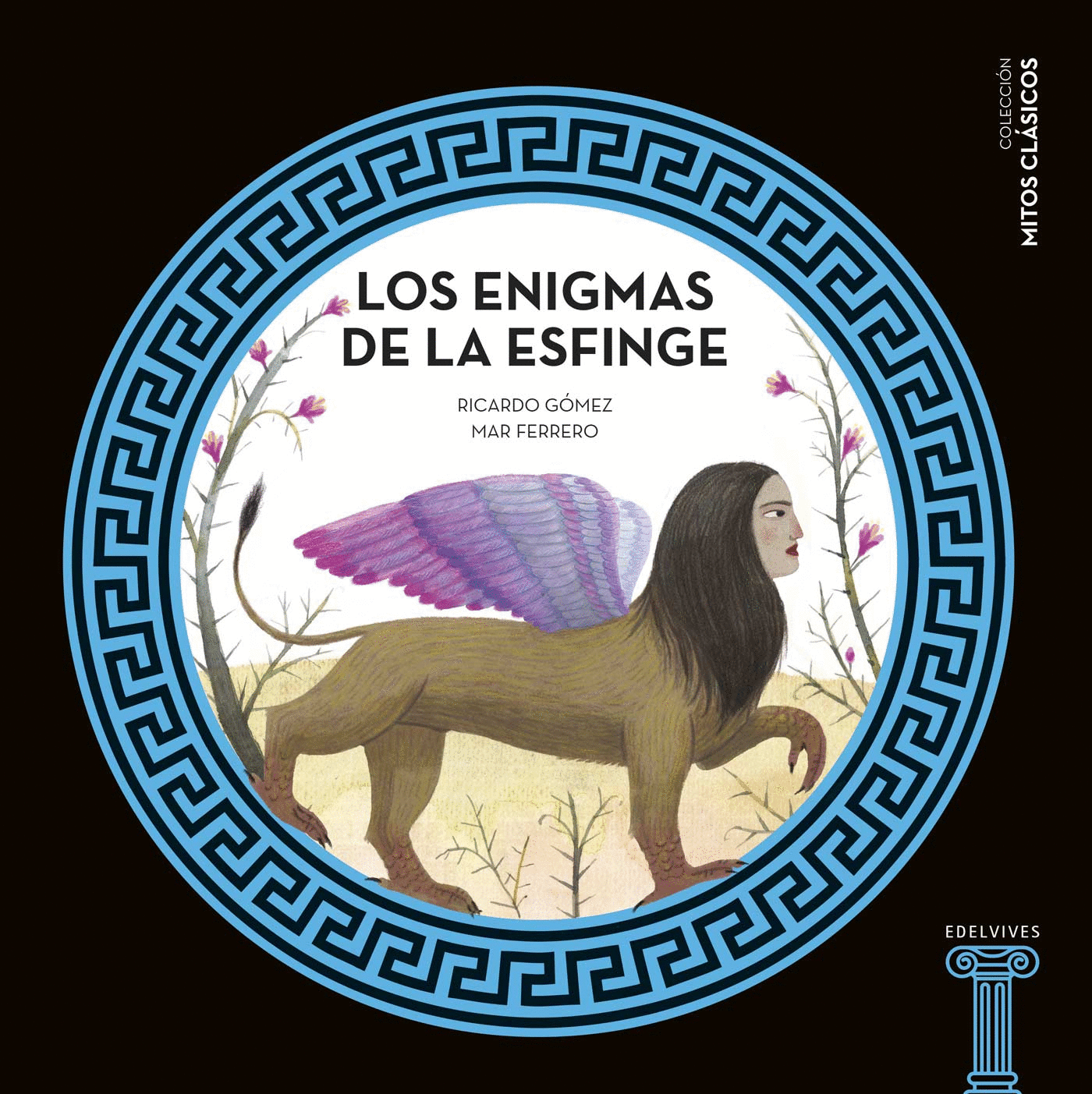Title: El Vuelo de Ícaro (The Flight of Icarus)
Author: Ricardo Gómez
Illustrator: Paloma Corral
Date: 2017
Tags: 7+, Picture book, Greco-Roman Mythology, Setting: Ancient, Icarus, Language: Spanish
This book is part of Grupo Editorial Luis Vives’ series Colección Mitos Clasicos. El Vuelo de Ícaro is a great book to introduce young readers of Spanish to the myth of Icarus. Author Ricardo Gómez puts the story quickly and accurately into context without going over the entire story of Theseus and the Minotaur. He also introduces important mythological themes, such as hybris, without becoming too technical. There is even an afterward that points out a few of the ways that the myth appears in the art, science, and literature of today.
Gómez’s retelling of the myth of Icarus and his father Daedalus does not shy away from the darker aspects of the myth. At one point, Icarus remembers, and tries to forget, a rumor that Daedalus killed his own nephew to steal his inventions. However, what really makes this book good is that it captures the tragedy of Icarus’s life as well as his fall. Icarus’s mother is named, and she grieves when her son is beaten and taken away. He is completely innocent of any wrongdoing, but he still must suffer for his father’s choices, past and present, right and wrong. In many ways, Icarus’s only true moment of freedom is when he is flying away from Crete, and that’s why he loses his head and flies too high.
The illustrations are simple, even stark at times. Illustrator Paloma Corral chooses empty landscapes with tiny figures to show how lonely Daedalus and Icarus are, locked away in their tower, and she floods her images with warm colors so that the world is caught up in a perpetual sunset.
The book is published in Spain, which makes it a little hard to find in the United States. Still, persistent searches on various online booksellers’ websites will turn up copies for sale, and you can order the book through the website of the publisher, Edelvives (Grupo Editorial Luis Vives). – Krishni Burns
El vuelo de Ícaro (2017), escrito por Ricardo Gómez e ilustrado por Paloma Corral, presenta la historia del arquitecto Dédalo que intenta escapar de la isla de Creta con su hijo Ícaro. Este libro pertenece a la Colección Mitos Clásicos, publicada por la Editorial Edelvives en España. La versión del mito presentada destaca por la sencillez y claridad del lenguaje y por iniciar la acción in medias res, cuando el rey Minos de Creta recibe tres noticias terribles que lo llevan a comportarse como un tirano y decide encerrar a Dédalo y a Ícaro en una torre para que no escapen de la isla. Los personajes mitológicos están humanizados, tanto a través del lenguaje como por medio de las descripciones de sus acciones cotidianas. Esta versión, con su estilo diáfano, permite introducir a niños de 6 a 8 años temas como la libertad, la tiranía, el amor familiar, la represión, las habilidades humanas, las consecuencias de la hybris o exceso y la importancia de la prudencia o sophrosyne. Los dibujos complementan las descripciones arquitectónicas del relato y ayudan a que el niño lector tenga una idea de la geografía cretense. Al final del libro, aparecen explicaciones geográficas y curiosidades que acercan el mito a nuestro tiempo. – Yoandy Cabrera Ortega












